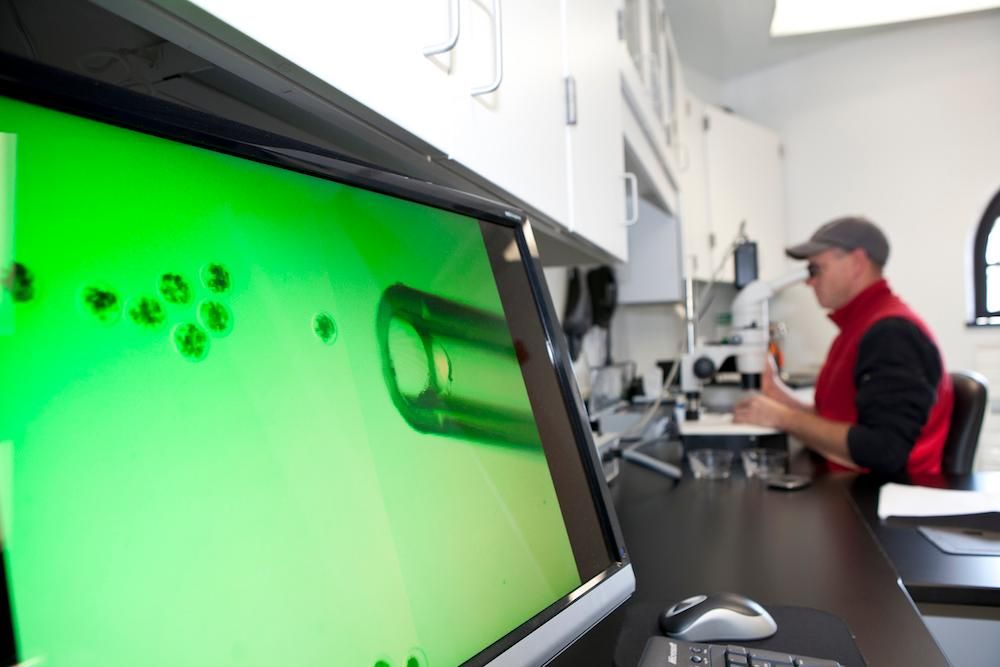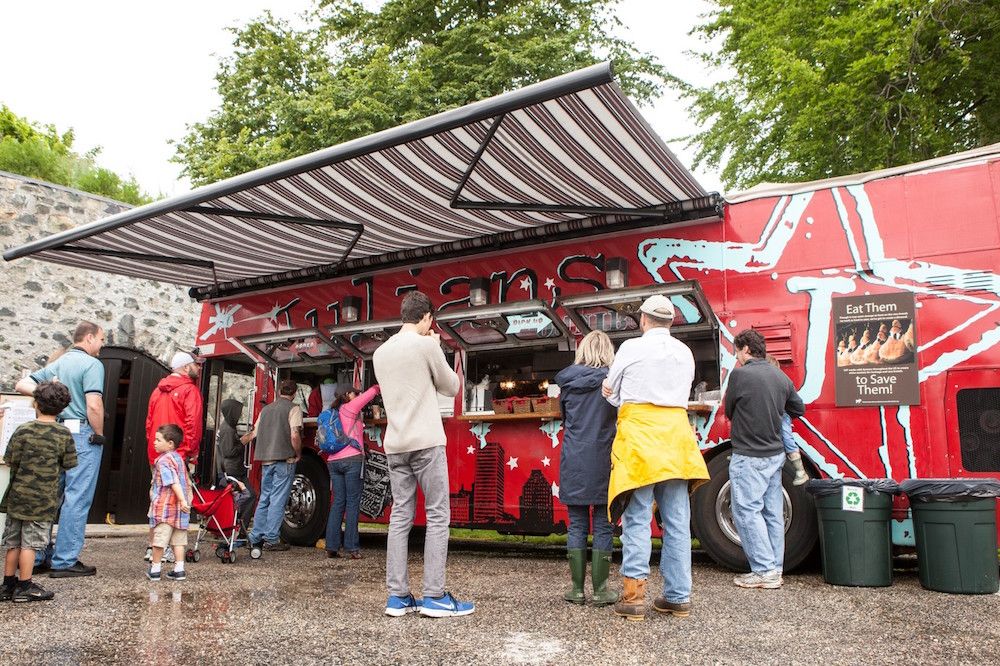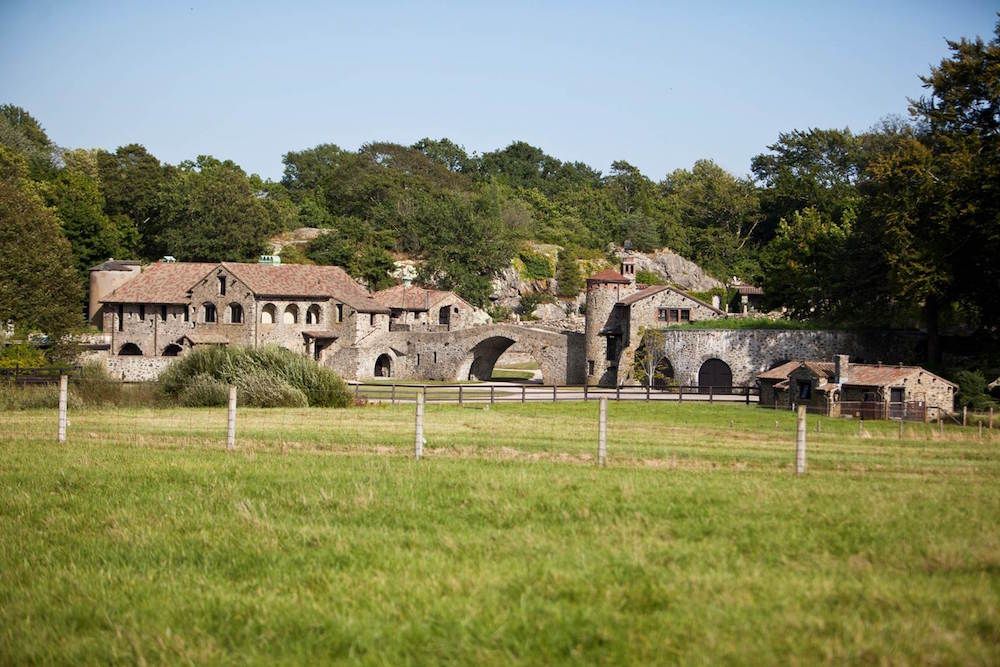For One Day Only, Visit the Farm and Cryogenics Laboratory Trying to Save Endangered Livestock Breeds
Enjoy a farm tour, cryogenics demonstration and a heritage-breed beef burger at Newport, Rhode Island’s Swiss Village Farm
From the outside looking in, the Swiss Village Farm (SVF) Foundation seems like your typical working farm. But what’s going on behind the property’s stonework wall in Newport, Rhode Island, may come as a surprise. For the past 14 years, employees have diligently collected semen samples and embryos from more than two dozen heritage breeds of livestock as part of a 20-year project—an undertaking that could one day save the country’s farming industry from collapse.
It all started in 1998 when philanthropist Dorrance H. Hamilton purchased the historic property as a place to preserve heritage livestock breeds. Since 2002, the foundation, in partnership with the Tufts Cummings Veterinary Medical Center at Tufts University, has been working on a germplasm project (essentially a seed bank for animals) to collect 200 embryos and 3,000 straws of semen from nearly 30 breeds of heritage livestock, including cattle, sheep and goats.
Sarah Bowley, SVF’s program director, tells Smithsonian.com that the program exists to stave off a phenomenon similar to the Irish Potato Famine that occurred from 1845 to 1849. During the famine, crops of a single variety of potato failed—a potato that happened to be Ireland’s main source of nutrition. The blight resulted in the death of more than one million people.
"Ireland had a monoculture with the Irish Lumper potato, since it was prolific and stored well," Bowley says. "When the blight hit, [they] didn’t have any diversity to fall back on. Unfortunately, we’ve replicated a similar system today in America." For example, says Bowley, cattle descendants from the Holstein breed produce 95 percent of all dairy products in the United States.
"The industry has created super-producer cows that make a lot of milk, but are very precarious," she explains. "Our dairy industry could be more stable with more diversity. What we’re trying to do at SVF is to have more diversity. Even if [a heritage breed] goes extinct, we’ll have something to fall back on.”
Although the U.S. Department of Agriculture (USDA) is the largest germplasm bank in the country and does keep samples from some of the more common cattle breeds, SVF's project is the largest to focus on endangered breeds. Working with breeders around the country, SVF purchases, leases or receives donations of heritage livestock, including Ancient White Park Cattle and Cotswold Sheep, so that lab staff can collect embryos and semen samples. Workers then store the samples using cyropreservation, a method that freezes specimens in liquid nitrogen to -196 degrees Celsius. SVF determines which breeds it needs using the Livestock Conservancy’s Conservation Priority Breeds List. After 20 years, when (ideally) all of the samples have been preserved, SVF will hand off its library to the Smithsonian Conservation Biology Institute (SCBI) in Virginia for safekeeping.
"We’re still working to create a protocol for releasing the samples in the future, and we may continue collecting specimens on the farm to some extent [after the hand off]," Bowley says. "Together with [Smithsonian], this project will help support the food chain in the future."
The SCBI is currently undergoing renovations to make way for the hand off, and once the samples are safely at the institute, authorized scientists and breeders will have access to them for future use and study.
"We can generate a lot of information from using these frozen samples because they’re well preserved and haven’t degraded," Pierre Comizzoli, a research scientist and the project leader of the cryoinitiative at the institute, tells Smithsonian.com. "We'll be able to create offspring from the frozen semen and embryos, which will contribute to the sustainability of the animal population."
With a project this epic and biosecurity so high, is it any wonder why a few people suspect what's up at the seemingly sedate farm? Luckily, the organization recognizes the importance of educating the public, which is why it opens its gates to visitors each year. On June 11, visitors can explore the 45-acre property, which dates back to 1914. Back then, the site was called Surprise Valley Farm, built by businessman Arthur Curtiss James to raise his herd of Guernsey cattle. Today, the historic stone buildings house laboratories, an infirmary, a cryo room and offices.
Although some areas are off-limits, guests can still meet members of the laboratory, veterinary and animal husbandry staff; experience live cryogenics and sheep-shearing demonstrations; and meet several of the roughly 125 animals that call the farm home. This includes a visit with Chip, a Tennessee Myotonic or “fainting” goat born from a frozen embryo—the first of this breed to be cryopreserved in the United States.
Julian’s Omnibus food truck will also be onsite selling local heritage-breed burgers. Although this might seem like an unexpected addition, Bowley explains: "To save breeds, you have to eat them by making them a viable part of our agricultural landscape," she says. "The only way farmers will raise them is if they can make a profit. Farmers can’t afford to raise them without income coming in. [Many of our visitors are surprised by this], but by the time they explore the farm and learn about our mission, they have an action plan in place to help support local farmers."

/https://tf-cmsv2-smithsonianmag-media.s3.amazonaws.com/filer/1f/54/1f54a6cd-2dff-477c-afa7-0b3903ee863c/horned_dorset_ram_at_svf.jpg)
/https://tf-cmsv2-smithsonianmag-media.s3.amazonaws.com/filer/68/87/6887e46a-5076-4610-8738-dd8207cf75ce/st_croix_lamb_on_pasture_at_svf.jpg)
/https://tf-cmsv2-smithsonianmag-media.s3.amazonaws.com/filer/32/ce/32cef3b3-812e-4834-8b23-a9aafa2a7a3f/svf_bridge.jpg)
/https://tf-cmsv2-smithsonianmag-media.s3.amazonaws.com/filer/4c/d7/4cd7d599-98ee-4084-94b5-4033295e3f32/svf_germplasm_repository.jpg)
/https://tf-cmsv2-smithsonianmag-media.s3.amazonaws.com/filer/f2/a1/f2a1f660-6c1e-47da-8911-1ffad8bab402/svf_herdsperson_marjorie_moniz_with_hog_island_ewe.jpg)
/https://tf-cmsv2-smithsonianmag-media.s3.amazonaws.com/filer/fd/c2/fdc24eeb-e4cf-4bf1-bf08-4c1630ae2790/svf_lab.jpg)
/https://tf-cmsv2-smithsonianmag-media.s3.amazonaws.com/filer/f1/e8/f1e89de0-6823-4352-8f80-95379605904d/svf_mascot_chip_-_fainting_goat.jpg)
/https://tf-cmsv2-smithsonianmag-media.s3.amazonaws.com/filer/fb/46/fb465d29-5f82-42a9-bb71-934982f4ee28/svf_visitors_day_2013_-_sheep_shearing_with_lead_herdsman_nick_bowley.jpg)

